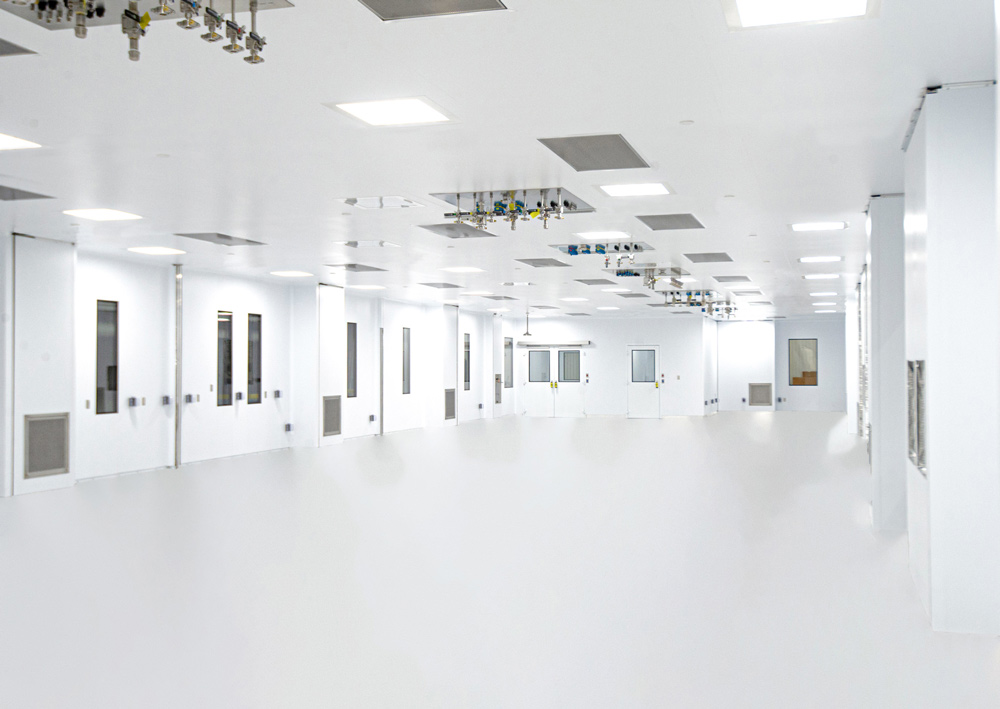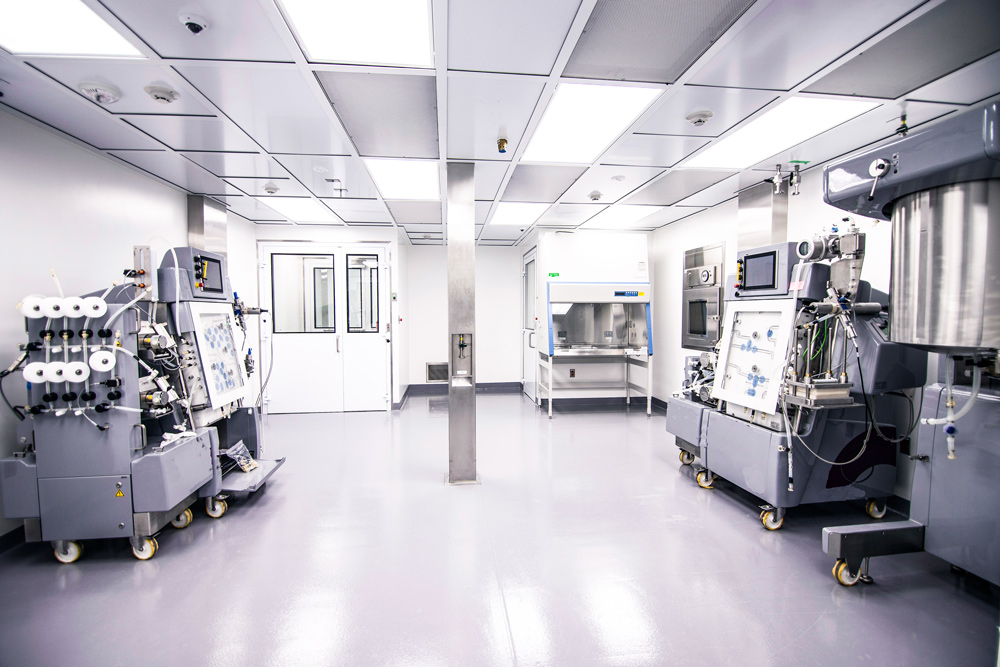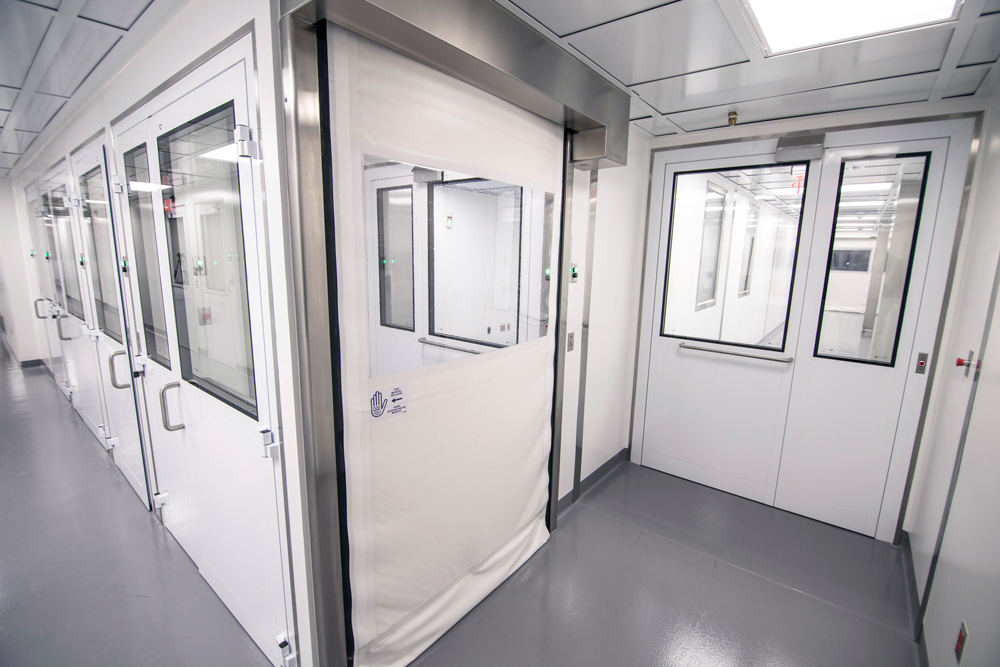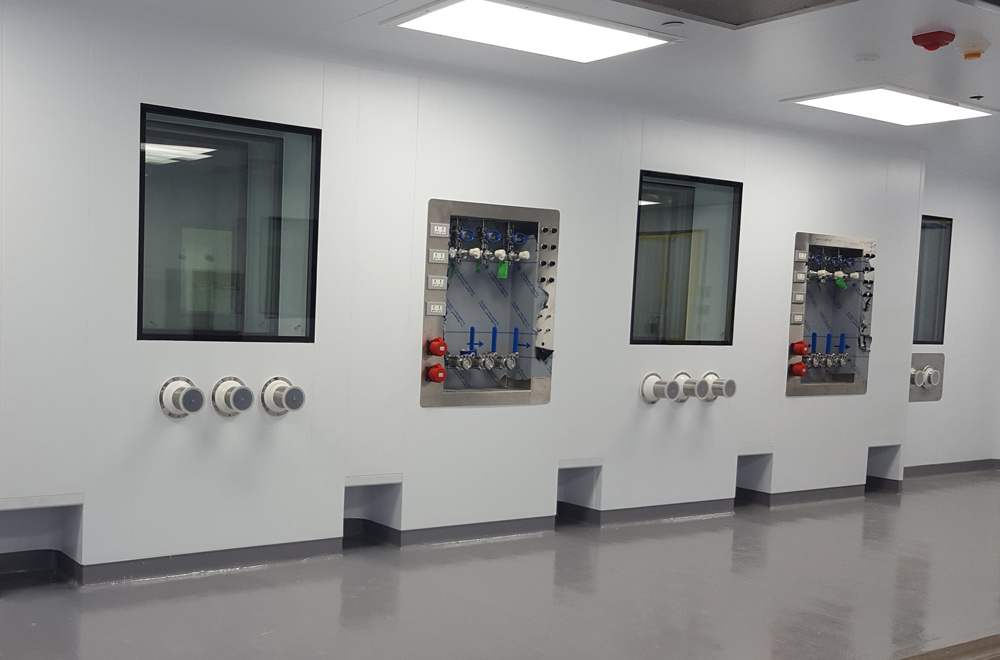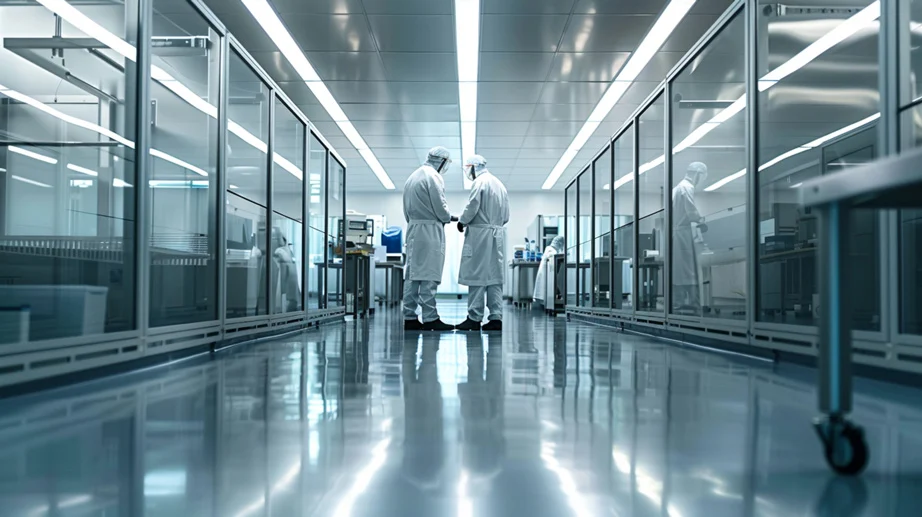
May 06, 2025
Discover the Impact of Cleanroom Classifications on Contamination Control
Discover the Impact of Cleanroom Classifications on Contamination Control
Cleanroom classifications specify the degree of airborne particulate control required to safeguard high-stakes processes such as pharmaceutical manufacturing, biotechnology, semiconductor fabrication, and aerospace engineering. Adhering to standards like ISO 14644, GMP, these classifications establish defined particle limits that are crucial for maintaining product integrity and operational efficiency FDA 21 CFR Part 11 establishes requirements for electronic records and signatures.
Understanding the Role in Contamination Prevention
By setting a maximum allowable particle concentration per cubic meter at defined particle sizes, these standards ensure that your production environments meet strict quality benchmarks. For example, under ISO 14644, environments range from exceptionally stringent conditions to settings designed for less critical applications. This rigorous control not only protects sensitive products from contamination but also minimizes facility downtime.
Technical Overview
| ISO Class | Maximum Particles/m³ (≥0.5µm) | Typical Application |
|---|---|---|
| ISO 1 | 10 | Semiconductor Fabrication |
| ISO 5 | 3,520 | Aseptic Fill-Finish Operations |
| ISO 7 | 352,000 | Biopharmaceutical Production |
| ISO 8 | 3,520,000 | General Pharmaceutical Manufacturing |
G-CON’s Modular Cleanroom Advantage
Our modular POD cleanrooms are pre-engineered to operate within ISO 5 to ISO 8 criteria, incorporating advanced HEPA and ULPA filtration alongside automated environmental monitoring systems. This design enables rapid installation and scalable configurations that evolve with your facility’s production demands, ensuring compliance and efficiency across applications—from cell and gene therapy to antibody production.
What Defines Cleanroom Classifications?
A Modern Perspective on Airborne Particulate Control
Cleanroom classifications delineate the strict environmental conditions required to maintain the integrity of sensitive manufacturing processes. These standards—informed by ISO 14644, GMP, —govern industries such as pharmaceutical production, biotechnology, semiconductor fabrication, and aerospace engineering. By defining allowable particulate limits, specifying air change rates, and outlining the operational states of facilities, these guidelines ensure that your production environments remain consistently contaminant-free.
Critical Elements in Contamination Prevention
Establishing the appropriate classification relies on three key components:
- Particle Concentration: The designated threshold for particles per cubic meter at certain micron levels.
- Airflow Dynamics: The air change rate which reflects the efficiency of purging contaminated air.
- Operational Context: The room’s condition—whether unoccupied, actively maintained, or undergoing continuous process flow—dictates the level of control needed.
The table below summarizes the ISO 14644 classification metrics essential for maintaining optimal conditions:
| ISO Class | Maximum Particles/m³ (≥0.5µm) | Applications |
|---|---|---|
| ISO 1 | 10 | Semiconductor Fabrication |
| ISO 5 | 3,520 | Aseptic Fill-Finish Operations |
| ISO 7 | 352,000 | Biopharmaceutical Production |
| ISO 8 | 3,520,000 | General Pharmaceutical Manufacturing |
G-CON’s Modular Cleanroom Advantage
Our modular cleanroom POD® Cleanrooms fulfill the rigid standards required by ISO 14644 while offering unmatched flexibility. Engineered for rapid, pre-certified deployment, our systems integrate state-of-the-art HEPA and ULPA filtration with automated environmental monitoring—ensuring real-time management of airflow, pressure differentials, and temperature stability. With configurations that span standardPOD, floorlessPOD, and megaPOD setups, your facility can effortlessly adapt to evolving production demands, whether scaling operations for cell and gene therapy or optimizing antibody production environments.
These innovative solutions offer a future-proof, compliant strategy for contamination control that not only secures product quality but also minimizes downtime, ensuring that your operations remain efficient, agile, and ready for tomorrow’s challenges.
Why Do Cleanroom Classifications Matter?
Safeguarding Safety and Compliance
Cleanroom classifications define the precise level of airborne particulate control essential to preserving product integrity and operational efficiency. Standards such as ISO 14644, GMP set strict particle limits that secure environments for pharmaceutical manufacturing, biotechnology, and semiconductor fabrication.
Mitigating Risk Effectively
An accurately classified cleanroom minimizes contamination risks that could compromise drug efficacy, semiconductor precision, or aerospace component reliability. Without these controls, uncontrolled particulates can impact product quality, trigger regulatory nonconformities, and cause prolonged operational downtime due to unplanned decontamination measures.
Technical Standards Overview
| ISO Class | Maximum Particles/m³ (≥0.5µm) | Typical Application |
|---|---|---|
| ISO 1 | 10 | Semiconductor Fabrication |
| ISO 5 | 3,520 | Aseptic Fill-Finish Operations |
| ISO 7 | 352,000 | Biopharmaceutical Production |
| ISO 8 | 3,520,000 | General Pharmaceutical Manufacturing |
Our Modular Cleanroom Advantage
Our modular POD cleanrooms are designed to meet ISO 5 — ISO 8 criteria. Engineered with high-efficiency HEPA and ULPA filtration, our systems continuously monitor air quality, pressure, and temperature to provide real-time compliance assurance. With configurations including standardPOD, floorlessPOD, and megaPOD, your facility can swiftly adjust to evolving production needs while ensuring robust contamination control and regulatory adherence.
How Can You Ensure Compliance with Cleanroom Standards?
Achieving and sustaining compliance with ISO 14644, GMP, and FDA 21 CFR Part 11 requires a proactive, integrated framework. We design our solutions to maintain contaminant-free environments and support electronic record compliance by aligning design, monitoring, and operational protocols in every phase of cleanroom management.
Begin by establishing a clear baseline. Define your cleanroom classification in relation to product sensitivity and regulatory mandates. Our approach ensures that your facilities meet stringent air cleanliness thresholds through precise control of airborne particulates and differential pressure management. This clarity enables both immediate regulatory alignment and long-term operational integrity.
Next, we implement advanced environmental monitoring. Our real-time particle counting systems, coupled with continuous tracking of airflow, temperature, and humidity levels, provide you with instantaneous data on your cleanroom conditions. This active monitoring not only prevents cross-contamination but also facilitates rapid adjustments to maintain optimal performance across all operational scenarios.
Validation is equally crucial. Prior to deployment, we perform comprehensive Factory Acceptance Testing (FAT) to verify that every cleanroom unit meets the customer’s specification and requirements. Post-installation, Site Acceptance Testing (SAT) verifies that not only is the system installed properly, but also confirms all interfaces are working properly. Routine requalification protocols further secure certification and guarantee lasting performance.
Our modular cleanroom POD® Cleanrooms and procedures help our customers meet these compliance measures. Engineered for rapid, pre-certified deployment, our standardPOD, floorlessPOD, and megaPOD configurations integrate automated environmental control systems and state-of-the-art HEPA/ULPA filtration. This integration allows your facility to scale and adapt seamlessly as production demands evolve, ensuring that your operational practices remain both efficient and compliant.
Where Are Cleanroom Classifications Used?
Cleanroom classifications secure environments that maintain product integrity and regulatory adherence across diverse sectors. In pharmaceutical and biopharmaceutical manufacturing, our modular systems support aseptic drug production, advanced therapies including cell and gene processing, and large-scale vaccine production. These environments meet strict ISO standards, ensuring controlled particle levels and optimal airflow for safe, reliable operations.
In semiconductor and microelectronics facilities, ultra-clean conditions prevent defects during wafer fabrication and microchip assembly. Aerospace and defense applications depend on controlled conditions for satellite assembly and high-precision avionics manufacturing. Medical device production also benefits from regulated cleanrooms that uphold sterility for implants and diagnostic equipment.
In food and beverage operations, clean environments reduce microbial risks in aseptic packaging and nutraceutical processing. Our modular cleanrooms—standardPOD, floorlessPOD, and megaPOD—are engineered for rapid deployment. They feature advanced HEPA/ULPA filtration and intelligent environmental monitoring, ensuring that your facilities continuously meet evolving compliance requirements and production demands while optimizing operational efficiency.
When Should You Consider Upgrading Your Cleanroom?
Recognizing the Need for Change
Cleanroom classifications set the airborne particulate control needed for precision processes. As regulatory criteria evolve and production methods advance, your facility may require an upgrade to maintain compliance, product integrity, and operational consistency.
Key Signs Your Facility Needs an Upgrade
- Regulatory Updates: Recent revisions in ISO 14644, GMP, or related standards may demand enhanced control measures.
- Evolving Product Demands: Introducing biologics or advanced semiconductor components calls for heightened environmental controls.
- Process Innovations: Shifts toward aseptic processing or high-risk compounding necessitate tighter particulate limits.
- Audit Insights: Regulatory inspections and internal audits revealing gaps indicate a need to elevate your environmental standards.
- Operational Expansion: Increased production capacity or the adoption of new technologies may require a more robust cleanroom environment.
Benefits of Upgrading
Upgrading strengthens your facility’s environmental control while ensuring compliance with dynamic industry standards. Optimized particulate management minimizes production interruptions and supports the dependable performance necessary for high-value applications. Improved stability in your cleanroom environment also safeguards product quality and reinforces your competitive positioning.
G‑CON’s Modular Cleanroom Advantage
Our modular cleanroom POD® Cleanrooms are designed for ISO 5 to ISO 8 conditions. Designed for rapid installation and seamless scalability, these systems integrate advanced HEPA/ULPA filtration with continuous environmental monitoring. This streamlined approach lets you adjust quickly to new regulatory and production demands while minimizing downtime and maintaining rigorous contamination control.
What Advantages Do Cleanroom Classifications Offer?
Enhanced Compliance & Risk Reduction
Cleanroom classifications establish rigorous environmental standards, ensuring that your operations meet ISO 14644, GMP, and USP 797/800 requirements. These standards lower the risk of contamination by enforcing strict particulate limits and precise airflow conditions. With robust audit readiness and clear regulatory alignment, your facility is well-prepared for inspections while reducing compliance-related interruptions.
Operational Efficiency & Cost Optimization
Strict classification criteria contribute to enhanced workflow continuity and improved process stability. Reduced batch rejection rates and predictable air quality management allow your facility to operate smoothly, minimizing downtime and cutting maintenance costs. Optimized environmental control not only supports quality production but also translates into cost-effective operational management.
Industry-Specific Impact
Different sectors benefit uniquely from these classifications. In pharmaceutical and biotech settings, they guarantee sterile conditions essential for aseptic processing, vaccine manufacture, and cell therapy. Semiconductor and electronics facilities maintain ultra-clean environments vital for wafer fabrication and microchip assembly. Aerospace and defense applications preserve integrity during sensitive satellite and component production, while medical devices achieve unmatched sterility for implants and diagnostics.
G‑CON’s Modular Cleanroom Edge
Our modular POD cleanrooms, designed for ISO Class 5 to 8 conditions, incorporate advanced HEPA and ULPA filtration paired with automated, real-time environmental monitoring. This design offers rapid pre-certified deployment and scalable configurations that adapt to evolving production needs. By seamlessly integrating state-of-the-art controls with flexible infrastructure, we provide a future-ready solution that secures product integrity and operational excellence.
Contact G-CON Today for Modular Cleanroom Solutions
Transform Your Facility with Scalable, Compliant Infrastructure
At G‑CON, we design modular cleanroom POD® Cleanrooms that drastically enhance your facility’s operational agility and regulatory alignment. Our advanced solutions are engineered for rapid deployment that minimizes downtime and helps you to ensure your facility consistently meets stringent industry standards.
Our cleanroom POD systems seamlessly integrate automated environmental monitoring with state-of-the-art HEPA/ULPA filtration. This integration delivers continuous control over air quality, pressure differentials, and temperature stability. Whether you are expanding pharmaceutical production, optimizing aseptic processing, or advancing biopharmaceutical manufacturing, our modular systems can accommodate your evolving production demands.
Why Choose G‑CON?
- Accelerated Installation: Our factory‐tested POD® Cleanrooms are engineered for swift, hassle‐free deployment—getting you operational faster.
- Regulatory Assurance: Our designs fully comply with ISO 14644, GMP, FDA 21 CFR Part 11, and USP standards, ensuring robust control.
- Broad Application: With configurations ranging from ISO Class 5 to 8, our solutions support diverse applications including cell therapy, biologics, and semiconductor fabrication.
- Advanced Environmental Management: Integrated systems continuously monitor and optimize air quality and environmental parameters.
- Dynamic Scalability and Expansion: Our modular approach enables phased growth without disrupting your ongoing operations.
Expert Consultation for Your Unique Needs
We work closely with you to develop custom cleanroom strategies that align with your production goals and regulatory requirements. Whether your project calls for a standardPOD, floorlessPOD, or megaPOD, our experts provide clear, actionable guidance to elevate your facility’s performance while ensuring operational compliance.
Reach out and discover how our modular cleanroom solutions can drive efficiency, safeguard quality, and support scalable growth in your organization.
What Standards Define Cleanroom Classifications?
International Standards Overview
Cleanroom classifications rely on rigorous benchmarks that dictate airborne particulate limits to ensure high-quality, contamination-free environments. These parameters are critical for industries including pharmaceutical manufacturing, biotechnology, semiconductor production, and aerospace engineering, where maintaining precise environmental conditions is essential for product integrity and compliance.
ISO 14644-1: The Global Reference
ISO 14644-1 is the cornerstone standard for cleanroom air quality, categorizing spaces from the most stringent (ISO Class 1) to less rigorous conditions (ISO Class 9). In addition, ISO 14644-2 sets forth mandatory monitoring and testing protocols to help maintain these classifications consistently over time.
| ISO Class | Maximum Particles/m³ (≥0.5µm) | Common Applications |
|---|---|---|
| ISO 1 | 10 | Semiconductor Fabrication |
| ISO 5 | 3,520 | Aseptic Fill-Finish Operations |
| ISO 7 | 352,000 | Biopharmaceutical Production |
| ISO 8 | 3,520,000 | General Pharmaceutical Processes |
GMP and FDA 21 CFR Part 11: Complementary Controls
Good Manufacturing Practice (GMP) standards, enforced by bodies such as the FDA, EMA, and WHO, augment ISO requirements with strict sterility, airflow control, and validation protocols. Similarly, FDA 21 CFR Part 11 ensures that electronic records and environmental monitoring data are reliable through measures like secure data storage, audit trails, and electronic signature validations.
G‑CON’s Modular Cleanroom Advantage
Our modular cleanroom POD® Cleanrooms meet ISO Class 5 to 8 criteria by integrating advanced HEPA/ULPA filtration and automated environmental monitoring systems. Factory-tested and scalable, our systems are designed to adapt to evolving production needs while ensuring continuous compliance and enhanced operational efficiency.
How Do Cleanroom Classifications Influence Product Quality?
Cleanroom classifications dictate the stringent particulate limits that underpin product integrity and operational excellence in high-stakes environments. Leveraging internationally recognized standards such as ISO 14644, GMP, and FDA 21 CFR Part 11, these criteria ensure that your manufacturing spaces remain uncontaminated and reliably efficient.
Precision in Environmental Control
Robust cleanroom standards enable:
- Stable Environmental Conditions: Active management of air quality, temperature, and humidity safeguards sensitive processes.
- Effective Contamination Barriers: Advanced HEPA and ULPA filtration paired with rigorous airflow control significantly reduce microbial and particulate intrusion.
- Regulatory Readiness: By aligning with critical industry standards, your facility minimizes risks of compliance gaps and operational disruptions.
- Risk Mitigation: Control measures directly lower incidences of batch rejections and unplanned downtime.
Technical Specifications
| ISO Class | Max Particles/m³ (≥0.5µm) | Application |
|---|---|---|
| ISO 1 | 10 | Semiconductor Fabrication |
| ISO 5 | 3,520 | Aseptic Fill-Finish Operations |
| ISO 7 | 352,000 | Biopharmaceutical Production |
| ISO 8 | 3,520,000 | General Pharmaceutical Processes |
G‑CON’s Modular Cleanroom Edge
Our modular POD cleanrooms are engineered to exceed rigid ISO Class 5 to 8 requirements. With rapidly deployable solutions—whether standardPOD, floorlessPOD, or megaPOD—we integrate:
- Cutting-Edge Filtration: HEPA and ULPA systems that actively purify the air.
- Real-Time Monitoring: Automated EMS continuously tracks air quality and pressure, ensuring immediate compliance.
- Scalable Design: Flexible configurations that can adapt to evolving production demands without compromising quality.
By merging advanced technology with streamlined installation, our approach not only meets but enhances your operational standards.
What Challenges Exist in Maintaining Cleanroom Compliance?
Regulatory Complexity
Cleanroom compliance faces hurdles as ISO 14644, GMP, and FDA 21 CFR Part 11 evolve. Facilities must update protocols constantly to meet new contamination limits, validation practices, and audit criteria. Non-compliance risks production stoppages and regulatory fines.
Environmental Monitoring
Maintaining particle-free environments depends on real-time tracking of airborne particulates, microbes, temperature, humidity, and pressure. An automated Environmental Monitoring System (EMS) identifies deviations immediately, ensuring that cleanroom conditions remain within strict limits.
Human and Process Control
Human activity contributes significantly to contamination risk. Strict gowning requirements, aseptic techniques, and controlled workflows reduce this threat. Regular training and robust Standard Operating Procedures (SOPs) are essential for minimizing operator-induced incidents.
Infrastructure Maintenance and Adaptability
Routine validation of HEPA/ULPA filtration, airflow systems, and decontamination measures is crucial. Consistent filter integrity tests, airflow assessments, and particle counts keep environments compliant. Additionally, facilities must adjust to process changes, or equipment upgrades, without interrupting operations.
G‑CON’s Modular Advantage
Our POD cleanrooms resolve these challenges designed with regulatory alignment and integrated, automated EMS(optional). Scalable configurations adapt to evolving production needs, providing efficient contamination control. This approach enables facilities to meet current standards and prepare for future regulatory advances.
Why Consider Upgrading Your Cleanroom Classification?
Upgrading your cleanroom classification is a strategic move to align with evolving regulatory requirements and optimize operational performance. As standards such as ISO 14644, GMP guidelines, and FDA 21 CFR Part 11 are refined, maintaining a high level of contamination control becomes critical to protecting high-value processes, from pharmaceuticals and biologics to semiconductor components.
Key Advantages of an Upgrade
Enhanced Contamination Control
Our advanced HEPA and ULPA filtration systems work in tandem with precision airflow management to drastically reduce airborne particulates. This robust approach shields your sensitive processes from microbial intrusion and particulate failures, ensuring that every production phase remains uncompromised.
Improved Efficiency and Cost Savings
A well-maintained, higher classification cleanroom directly reduces downtime, minimizes costly decontamination cycles, and streamlines requalification processes. Integrated environmental monitoring systems provide real-time data, precipitating proactive maintenance and ensuring sustained operational efficiency.
G‑CON’s Modular Advantage
Our modular POD cleanrooms are built to meet ISO Class 5 to 8. With adaptable configurations and rapid installation capabilities, our solutions allow you to adapt to future requirements or business needs without extensive renovations. This approach provides a future-ready, scalable solution that seamlessly meets the dynamic demands of modern production environments.
Where Are Cleanroom Classifications Used?
Industry Applications of Cleanroom Classifications
Cleanroom classifications underpin environments where stringent airborne particulate control is essential. International standards, including ISO 14644, GMP requirements, define maximum particle levels to ensure optimal production conditions.
Pharmaceutical & Biopharmaceutical Manufacturing
In pharmaceutical operations, sterile drug production is safeguarded by cleanrooms rated between ISO 5 and ISO 7. Facilities for cell and gene therapy benefit from adaptable settings that can accommodate evolving protocols, while high‐containment areas for biologics and vaccine manufacturing maintain rigorous biosafety.
Semiconductor & Microelectronics
Precision wafer fabrication and microchip assembly require environments with extremely low particulate counts (ISO 1 to ISO 5). Ultra‑clean conditions also support optoelectronics production and nanotechnology applications, where even minimal contamination can affect product quality.
Aerospace & Defense
Assembly of satellites and spacecraft, as well as the manufacturing of military‐grade electronics, relies on controlled environments to preserve component integrity. These settings typically mirror stringent cleanroom standards to avoid any interference from particulates.
Medical Device Manufacturing and Food Processing
Medical devices, including surgical implants, demand ISO 7 to ISO 8 conditions to ensure sterility and high performance. Similarly, controlled environments are vital in aseptic packaging and nutraceutical processing to minimize microbial risks.
G‑CON’s Modular Cleanroom Advantage
Our modular cleanrooms offer pre‑validated, rapidly deployable solutions engineered to consistently meet ISO 5 to ISO 8 standards. Our standardPOD, floorlessPOD, and megaPOD configurations feature advanced HEPA/ULPA filtration and integrated environmental monitoring systems that actively regulate air quality, pressure, and temperature. These flexible systems support your facility’s need for regulatory compliance, maximize operational efficiency, and scale quickly in response to evolving production demands.
Who Gains the Most from Cleanroom Classifications?
Cleanroom classifications define the environmental controls that protect product quality and operational performance across diverse industries. These standards establish precise airborne particle limits to secure manufacturing processes, whether you are producing pharmaceuticals, semiconductors, aerospace components, or medical devices.
Primary Beneficiaries
1. Pharmaceutical and Biopharmaceutical Sectors
Our modular solutions support sterile drug production and advanced therapies such as cell and gene treatment. Facilities benefit from environments that meet rigorous standards—ranging from tighter to more flexible conditions—while maintaining uncompromised safety and efficiency in vaccine and biologics manufacturing.
2. Semiconductor and Microelectronics
Precision is achieved when manufacturing spaces maintain extremely low particulate counts. Wafer fabrication and nano-scale device production depend on environments with stringent cleanliness, ensuring each component meets exacting performance benchmarks.
3. Aerospace and Defense
Manufacturing processes in this sector require exceptionally clean conditions to protect sensitive components used in satellite assembly and defense electronics. Our systems provide the controlled settings necessary to minimize contamination risks in these high-stakes applications.
4. Medical Device Production
From surgical implants to diagnostic equipment, controlled environments ensure that every piece meets critical sterility requirements.
5. Food and Beverage Processing
Controlled spaces designed for aseptic packaging and nutraceutical production reduce microbial risks, supporting safe and compliant production processes in industries where quality control is non-negotiable.
Enhancing Value Through G‑CON’s Modular Cleanrooms
Our POD cleanrooms offer dynamic and scalable solutions tailored to meet stringent environmental standards. Designed for swift deployment, each configuration—whether standardPOD, floorlessPOD, or megaPOD—features advanced HEPA/ULPA filtration and automated environmental monitoring. These systems actively manage air quality, pressure, and temperature, enabling rapid facility adaptation and continuous compliance.

